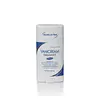What's inside
What's inside
 Key Ingredients
Key Ingredients

No key ingredients
 Benefits
Benefits

 Concerns
Concerns

No concerns
 Ingredients Side-by-side
Ingredients Side-by-side

Cocos Nucifera Oil
MaskingSolanum Tuberosum Starch
AbsorbentCoco-Caprylate/Caprate
EmollientHelianthus Annuus Seed Wax
Skin ConditioningCarthamus Tinctorius Seed Oil
MaskingPolyhydroxystearic Acid
EmulsifyingTriethyl Citrate
MaskingZinc Ricinoleate
Magnesium Hydroxide
AbsorbentLauryl Laurate
Skin ConditioningSambucus Nigra Fruit Extract
AstringentGlyceryl Laurate
EmollientSalvia Officinalis Oil
MaskingHelianthus Annuus Seed Oil
EmollientTocopherol
AntioxidantGlyceryl Caprylate
EmollientGlyceryl Undecylenate
EmollientEthylhexylglycerin
Skin ConditioningSodium Caproyl/Lauroyl Lactylate
AntimicrobialCocos Nucifera Oil, Solanum Tuberosum Starch, Coco-Caprylate/Caprate, Helianthus Annuus Seed Wax, Carthamus Tinctorius Seed Oil, Polyhydroxystearic Acid, Triethyl Citrate, Zinc Ricinoleate, Magnesium Hydroxide, Lauryl Laurate, Sambucus Nigra Fruit Extract, Glyceryl Laurate, Salvia Officinalis Oil, Helianthus Annuus Seed Oil, Tocopherol, Glyceryl Caprylate, Glyceryl Undecylenate, Ethylhexylglycerin, Sodium Caproyl/Lauroyl Lactylate
 Reviews
Reviews

Alternatives
Ingredients Explained
These ingredients are found in both products.
Ingredients higher up in an ingredient list are typically present in a larger amount.
Triethyl Citrate comes from citric acid. It has masking, perfuming, and solvent properties. As a solvent, this ingredient helps disperse ingredients evenly in skincare.
One manufacturer claims this ingredient can:
According to perfume manufacturers, this ingredient is almost odorless but has a mild fruity, wine and plum scent. It can be used to mask the scent of other ingredients.
This ingredient can be plant-sourced or synthetic; it can naturally be found in cabbage and white wine.
Learn more about Triethyl Citrate